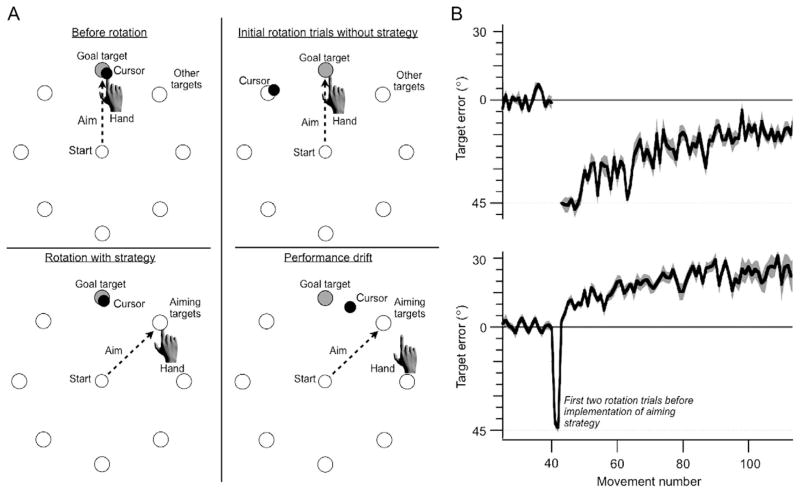FIGURE 4.
Experimental conditions used by Mazzoni and Krakauer (2006) to assess the effect of strategy use in countering a visuomotor rotation. (A) Top left: Before the rotation the participant reaches to a goal target (gray-filled circle) and the visual feedback is veridical. Top right: The participant experiences two trials of the 45° visuomotor rotation. Bottom left: The participant is then instructed to offset this rotation by aiming to a landmark 45° clockwise from the target (unfilled circle). Bottom right: As training continues, target errors (performance) drift in the direction of the aiming target. Note that in all displays, eight circles arranged along an invisible ring, indicating possible target locations were always visible. One turned into the goal target. (B) The top panel shows a standard adaptation with a gradual reduction in directional error over trials. In the bottom panel, the instructions are provided after the first two trials with the rotation. Target error immediately drops to near 0, but then increases (drifts) in the opposite direction.

